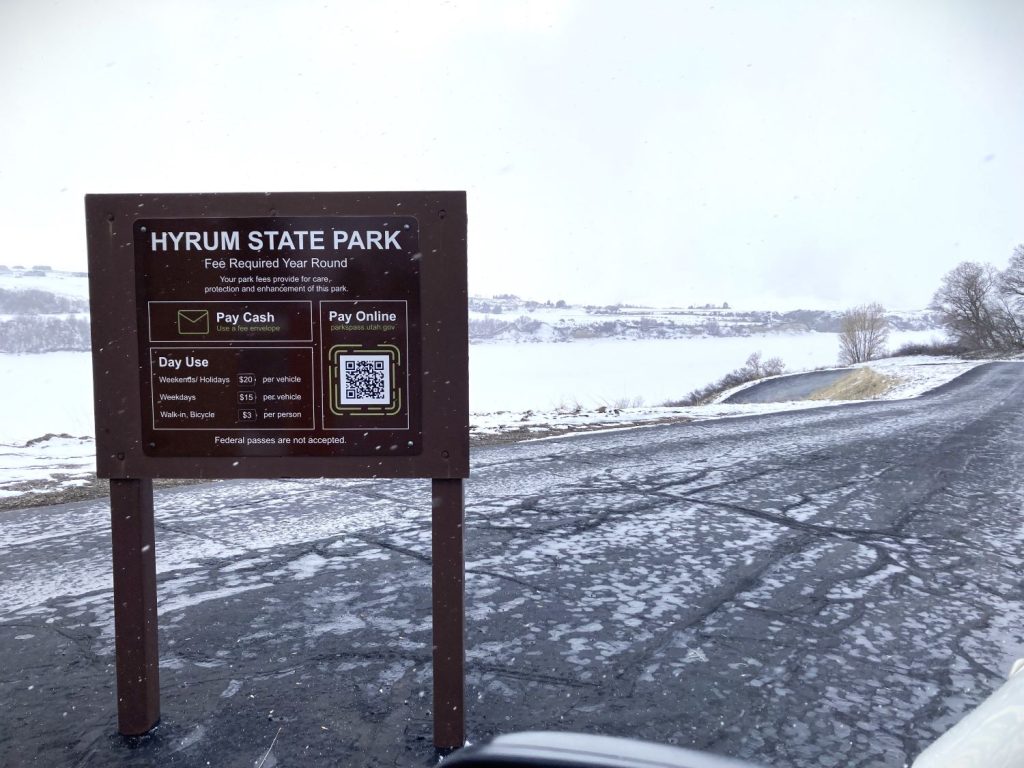Hyrum Dam Statewide is one of the many reservoirs in the state that have currently 83 percent full marking a stark contrast to a year ago when reservoirs were 48 percent full.
SALT LAKE CITY – As February has come to an end, Utah’s water supply looks like it may be enough to meet everyone’s needs. Overall, the state’s snowpack is above normal levels for most regions. This is good news as the snowpack and soil moisture sets an optimistic tone for water conditions.

“Above-normal snowpack is a significant win for our state as a whole, especially with our rocky start,” Candice Hasenyager, director of the Division of Water Resources, said. “It positions us well for the coming months and emphasizes the positive impact of recent weather patterns.”
January storms played a vital role in boosting the state’s snowpack, with southern Utah experiencing particularly significant benefits.
Right now the soil is saturated. This, coupled with an above-normal snowpack and robust reservoir levels, positions the state favorably as we progress through winter. As noted in NRCS’s February 1, Water Supply Outlook Report for Utah, every major watershed in Utah received above-normal precipitation in January.
“The recent storms have benefited the state as a whole and have significantly contributed to addressing water supplies in southern Utah,” Hasenyager said. “This, coupled with high reservoir storage, is good news, but we still need to use our water wisely to help preserve our water supplies.”
Statewide, reservoirs are currently at an impressive 83 percent, marking a stark contrast to a year ago when reservoirs were 48 percent full. Normal is 59 percent for this time of year. This reinforces the importance of our water storage infrastructure.
“Right now, statewide we are at 117 percent of normal with 14.3 inches above normal snowpack statewide,” said Michael Sanchez, a Utah Division of Water Resources spokesman. “Normally we peak at 16 inches in April. That is good news.”
Continued conservation ensures reservoirs have an adequate water supply during times of drought. As one of the driest states in the nation, no one knows what each year will bring.
“We are definitely better off now than we were last year we at this time, we are currently 8l percent of normal and we expect to have more precipitation in March and April,” he said. “We will likely get more snow in the mountains. I feel like we are in a pretty good position for water this year.”
Sanchez said flooding wasn’t too bad last year, but there is always a risk of flooding and mudslides. Atmospheric rivers tend to bring with it mudslides. He said at this point there is less worry about flooding and mudslides than last year.
Last year the big worry was flooding. There was lots of snow and the soil was saturated. Based on what they have seen so far, Division of Water Resources expects more favorable conditions than last year; there should be less worries when it comes to floods and mudslides.
“Last year the big worry was flooding because we had lots of snow in the mountains,” Sanchez said. “Based on what we have in the mountains I would say we are a better condition to not have much flooding.”
Even with the abundance of water Division of Water Resources is encouraging water conservation among Utahns. They continue to promote initiatives such as the Agricultural Optimization Program for farmers and SlowtheFlow.org for residents. These programs aim to educate and incentivize water-saving practices, ensuring Utahns become more drought-resilient and prepare for future conditions.

